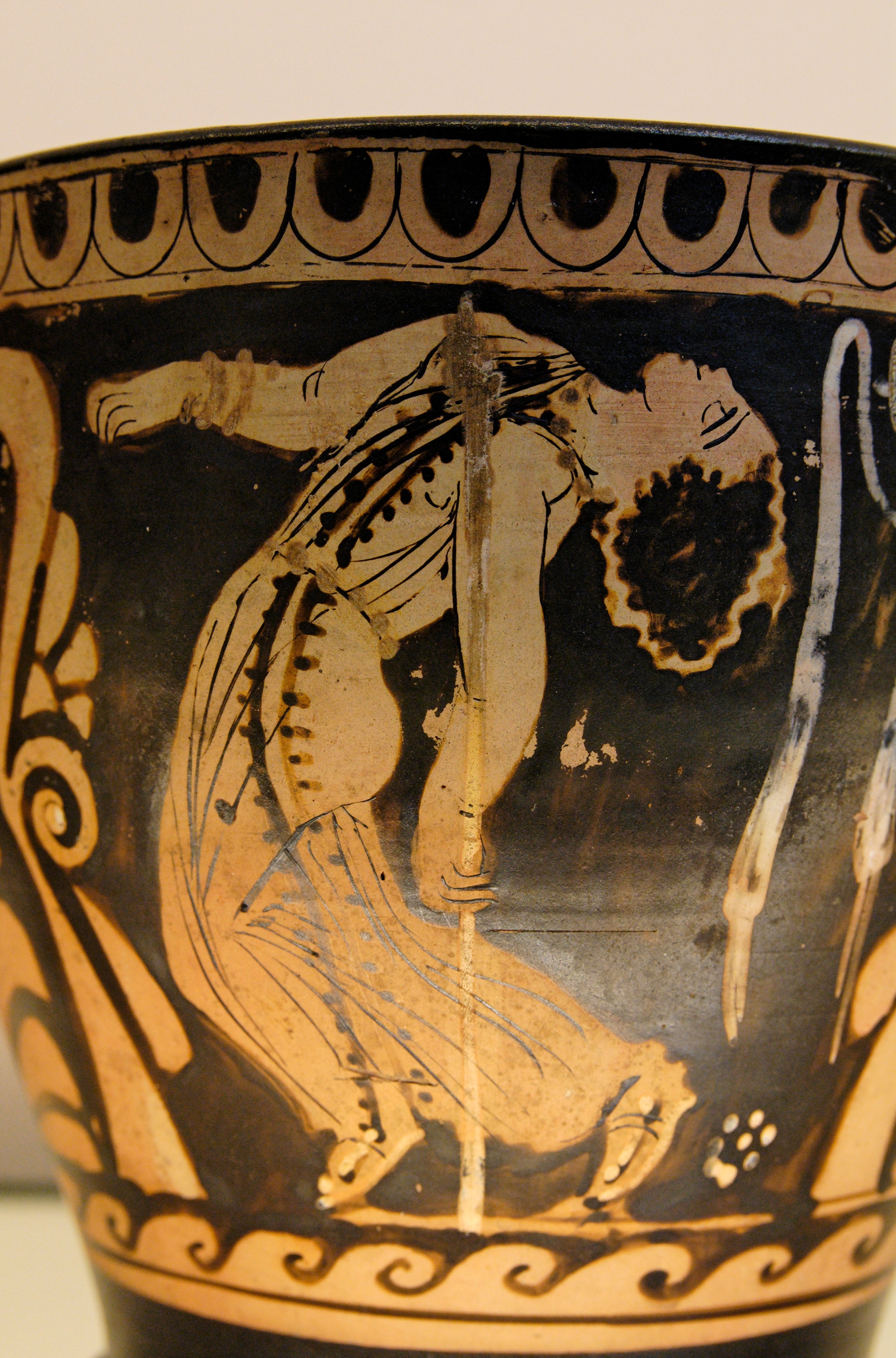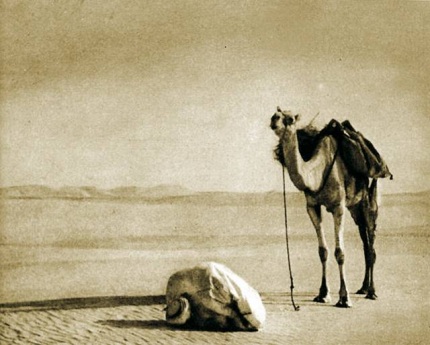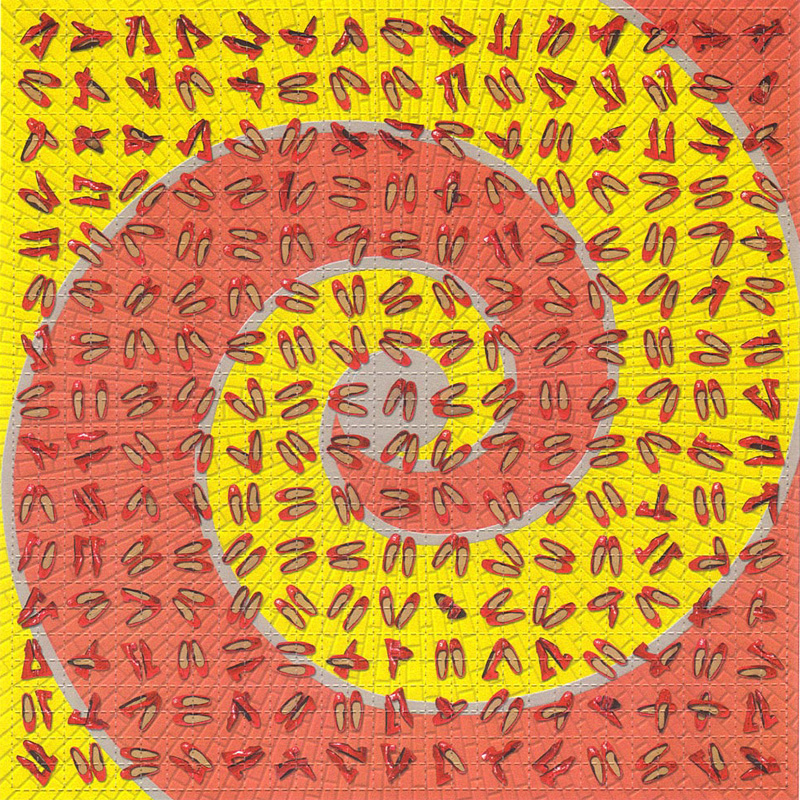|
Ecstatic Dance
Ecstatic dance is a form of dance in which the dancers, sometimes without the need to follow specific steps, release themselves to the rhythm and move freely as the music takes them, leading to trance and a feeling of ecstasy. The effects of ecstatic dance begin with ecstasy itself, which may be experienced in differing degrees. Dancers are described as feeling connected to others, and to their own emotions. The dance serves as a form of meditation, helping people to stress management, cope with stress and to attain serenity. In the ancient and widespread practice of shamanism, ecstatic dance and rhythmic drumming are used to alter consciousness in spiritual practices. Ecstatic sacred dances are known also from religious traditions around the world. Modern ecstatic dance was revived by Gabrielle Roth in the 1970s and formalised in her 5Rhythms practice; it is now found in variants across the western world. Attitudes to ecstatic dance have varied widely. In the 1920s, musicologis ... [...More Info...] [...Related Items...] OR: [Wikipedia] [Google] [Baidu] [Amazon] |
Dancing Maenad Python BM VaseF253
Dance is an The arts, art form, consisting of sequences of body movements with aesthetic and often Symbol, symbolic value, either improvised or purposefully selected. Dance can be categorized and described by its choreography, by its repertoire of movements or by its History of dance, historical period or List of ethnic, regional, and folk dances by origin, place of origin. Dance is typically performed with Music, musical accompaniment, and sometimes with the dancer simultaneously using a musical instrument themselves. Two common types of group dance are Concert dance, theatrical and Participation dance, participatory dance. Both types of dance may have special functions, whether social, ceremonial, Competitive dance, competitive, Erotic dance, erotic, War dance, martial, Sacred dance, sacred or Liturgical dance, liturgical. Dance is not solely restricted to performance, as dance is used as a form of exercise and occasionally training for other sports and activities. Dance perf ... [...More Info...] [...Related Items...] OR: [Wikipedia] [Google] [Baidu] [Amazon] |
Ecstasy (emotion)
Ecstasy () is a subjective experience of total involvement of the subject with an object of their awareness. In classical Greek literature, it refers to removal of the mind or body "from its normal place of function." Total involvement with an object of interest is not an ordinary experience. Ecstasy is an example of an altered state of consciousness characterized by diminished awareness of other objects or the total lack of the awareness of surroundings and everything around the object. The word is also used to refer to any heightened state of consciousness or intensely pleasant experience. It is also used more specifically to denote states of awareness of non-ordinary mental spaces, which may be perceived as spiritual (the latter type of ecstasy often takes the form of religious ecstasy). Description From a psychological perspective, ecstasy is a loss of self-control and sometimes a temporary loss of consciousness, which is often associated with religious mysticism, sexu ... [...More Info...] [...Related Items...] OR: [Wikipedia] [Google] [Baidu] [Amazon] |
Maenad
In Greek mythology, maenads (; ) were the female followers of Dionysus and the most significant members of his retinue, the '' thiasus''. Their name, which comes from μαίνομαι (''maínomai'', “to rave, to be mad; to rage, to be angry”), literally translates as 'raving ones'. Maenads were known as Bassarids, Bacchae , or Bacchantes in Roman mythology after the penchant of the equivalent Roman god, Bacchus, to wear a bassaris or fox skin. Often the maenads were portrayed as inspired by Dionysus into a state of ecstatic frenzy through a combination of dancing and intoxication. During these rites, the maenads would dress in fawn skins and carry a thyrsus, a long stick wrapped in ivy or vine leaves and tipped with a pine cone. They would weave ivy-wreaths around their heads or wear a bull helmet in honor of their god, and often handle or wear snakes. These women were mythologized as the "mad women" who were nurses of Dionysus in Nysa. Lycurgus "chased the Nurs ... [...More Info...] [...Related Items...] OR: [Wikipedia] [Google] [Baidu] [Amazon] |
Greek Mythology
Greek mythology is the body of myths originally told by the Ancient Greece, ancient Greeks, and a genre of ancient Greek folklore, today absorbed alongside Roman mythology into the broader designation of classical mythology. These stories concern the ancient Greek religion's view of the Cosmogony, origin and Cosmology#Metaphysical cosmology, nature of the world; the lives and activities of List of Greek deities, deities, Greek hero cult, heroes, and List of Greek mythological creatures, mythological creatures; and the origins and significance of the ancient Greeks' cult (religious practice), cult and ritual practices. Modern scholars study the myths to shed light on the religious and political institutions of ancient Greece, and to better understand the nature of mythmaking itself. The Greek myths were initially propagated in an oral tradition, oral-poetic tradition most likely by Minoan civilization, Minoan and Mycenaean Greece, Mycenaean singers starting in the 18th century&n ... [...More Info...] [...Related Items...] OR: [Wikipedia] [Google] [Baidu] [Amazon] |
Compassion
Compassion is a social feeling that motivates people to go out of their way to relieve the physical, mental, or emotional pains of others and themselves. Compassion is sensitivity to the emotional aspects of the suffering of others. When based on notions such as fairness, justice, and interdependence, it may be considered partially rational in nature. Compassion involves "feeling for another" and is a precursor to empathy, the "feeling as another" capacity (as opposed to sympathy, the "feeling towards another"). In common parlance, active compassion is the desire to alleviate another's suffering. Compassion involves allowing oneself to be moved by suffering to help alleviate and prevent it. An act of compassion is one that is intended to be helpfulness, helpful. Other virtues that harmonize with compassion include patience, wisdom, kindness, Psychological resilience, perseverance, warmth, and resolve. It is often, though not inevitably, the key component in altruism. The differ ... [...More Info...] [...Related Items...] OR: [Wikipedia] [Google] [Baidu] [Amazon] |
Sadness
Sadness is an emotional pain associated with, or characterized by, feelings of disadvantage, loss, despair, grief, helplessness, disappointment and sorrow. An individual experiencing sadness may become quiet or lethargic, and withdraw themselves from others. An example of severe sadness is depression, a mood which can be brought on by major depressive disorder or persistent depressive disorder. Crying can be an indication of sadness. Sadness is one of the six basic emotions described by Paul Ekman, along with happiness, anger, surprise, fear, and disgust. Childhood Sadness is a common experience in childhood. Sometimes, sadness can lead to depression. Some families may have a (conscious or unconscious) rule that sadness is "not allowed", but Robin Skynner has suggested that this may cause problems, arguing that with sadness "screened off", people can become shallow and manic. Pediatrician T. Berry Brazelton suggests that acknowledging sadness can make it ... [...More Info...] [...Related Items...] OR: [Wikipedia] [Google] [Baidu] [Amazon] |
Anger
Anger, also known as wrath ( ; ) or rage (emotion), rage, is an intense emotional state involving a strong, uncomfortable and non-cooperative response to a perceived provocation, hurt, or threat. A person experiencing anger will often experience physical effects, such as increased heart rate, elevated blood pressure, and increased levels of epinephrine, adrenaline and norepinephrine, noradrenaline. Some view anger as an emotion that triggers part of the fight-or-flight response, fight or flight response. Anger becomes the predominant feeling behavior, behaviorally, cognition, cognitively, and physiology, physiologically when a person makes the conscious choice to take action to immediately stop the threatening behavior of another outside force. Anger can have many physical and mental consequences. The external expression of anger can be found in facial expressions, body language, physiological responses, and at times public acts of aggression. Facial expressions can range from ... [...More Info...] [...Related Items...] OR: [Wikipedia] [Google] [Baidu] [Amazon] |
Fear
Fear is an unpleasant emotion that arises in response to perception, perceived dangers or threats. Fear causes physiological and psychological changes. It may produce behavioral reactions such as mounting an aggressive response or fleeing the threat, commonly known as the fight-or-flight response. Extreme cases of fear can trigger an immobilized freeze response. Fear in humans can occur in response to a present stimulus (physiology), stimulus or anticipation of a future threat. Fear is involved in some mental disorders, particularly anxiety disorders. In humans and other animals, fear is modulated by cognition and learning. Thus, fear is judged as rational and appropriate, or irrational and inappropriate. Irrational fears are phobias. Fear is closely related to the emotion anxiety, which occurs as the result of often future threats that are perceived to be uncontrollable or unavoidable. The fear response serves survival and has been preserved throughout evolution. Even simple ... [...More Info...] [...Related Items...] OR: [Wikipedia] [Google] [Baidu] [Amazon] |
Stress Management
Stress management consists of a wide spectrum of techniques and psychotherapy, psychotherapies aimed at controlling a person's level of psychological stress, especially chronic stress, generally for the purpose of improving the function of everyday life. Stress produces numerous physical and mental symptoms which vary according to each individual's situational factors. These can include a decline in physical health, such as headaches, chest pain, fatigue, Psychological stress and sleep, sleep problems, and Depression (mood), depression. The process of stress management is a key factor that can lead to a happy and successful life in modern society. Stress management provides numerous ways to manage anxiety and maintain overall well-being. There are several models of stress management, each with distinctive explanations of mechanisms for controlling stress. More research is necessary to provide a better understanding of which mechanisms actually operate and are effective in practice ... [...More Info...] [...Related Items...] OR: [Wikipedia] [Google] [Baidu] [Amazon] |
Maria-Gabriela Wosien
Bernhard Wosien (19 September 1908, in Passenheim, Masuren29 April 1986, Munich) was a German Ballet master, choreographer and professor of expression education and dance. Wosien is the founder of the modern form of sacred dance; he was assisted by his daughter, Maria-Gabriele Wosien. Biography Wosien's professional and artistic development included working as a dancer, assistant director, ballet master, dance educator, choreographer, dance scholar and draftsman. He began his career as a long-time stage dancer, moving on to become a dance teacher, using dance and aspects of dancing in spiritual and curative contexts. Wosien ended his career as a Professor without a doctorate at the University of Marburg/Lahn (teaching expression education and dance) and staff at the Friedrich Meinertz Institute (Special needs teacher training) at the Heckscher Clinic in Munich (Empirical research curative education procedures with behaviorally and cerebrally damaged children, development of m ... [...More Info...] [...Related Items...] OR: [Wikipedia] [Google] [Baidu] [Amazon] |
Hallucinogenic Drug
Hallucinogens, also known as psychedelics, entheogens, or historically as psychotomimetics, are a large and diverse class of psychoactive drugs that can produce altered states of consciousness characterized by major alterations in thought, mood, and perception as well as other changes. Hallucinogens are often categorized as either being psychedelics, dissociatives, or deliriants, but not all hallucinogens fall into these three classes. Examples of hallucinogens include psychedelics or serotonin 5-HT2A receptor agonists like LSD, psilocybin, mescaline, and dimethyltryptamine, DMT; dissociatives or NMDA receptor antagonists like ketamine, phencyclidine, PCP, dextromethorphan, DXM, and nitrous oxide; deliriants or antimuscarinics like scopolamine and diphenhydramine; cannabinoids or endocannabinoid system, cannabinoid CB1 receptor, CB1 receptor agonists like tetrahydrocannabinol, THC, nabilone, and JWH-018; kappa-opioid receptor, κ-opioid receptor agonists like salvinorin A and ... [...More Info...] [...Related Items...] OR: [Wikipedia] [Google] [Baidu] [Amazon] |











